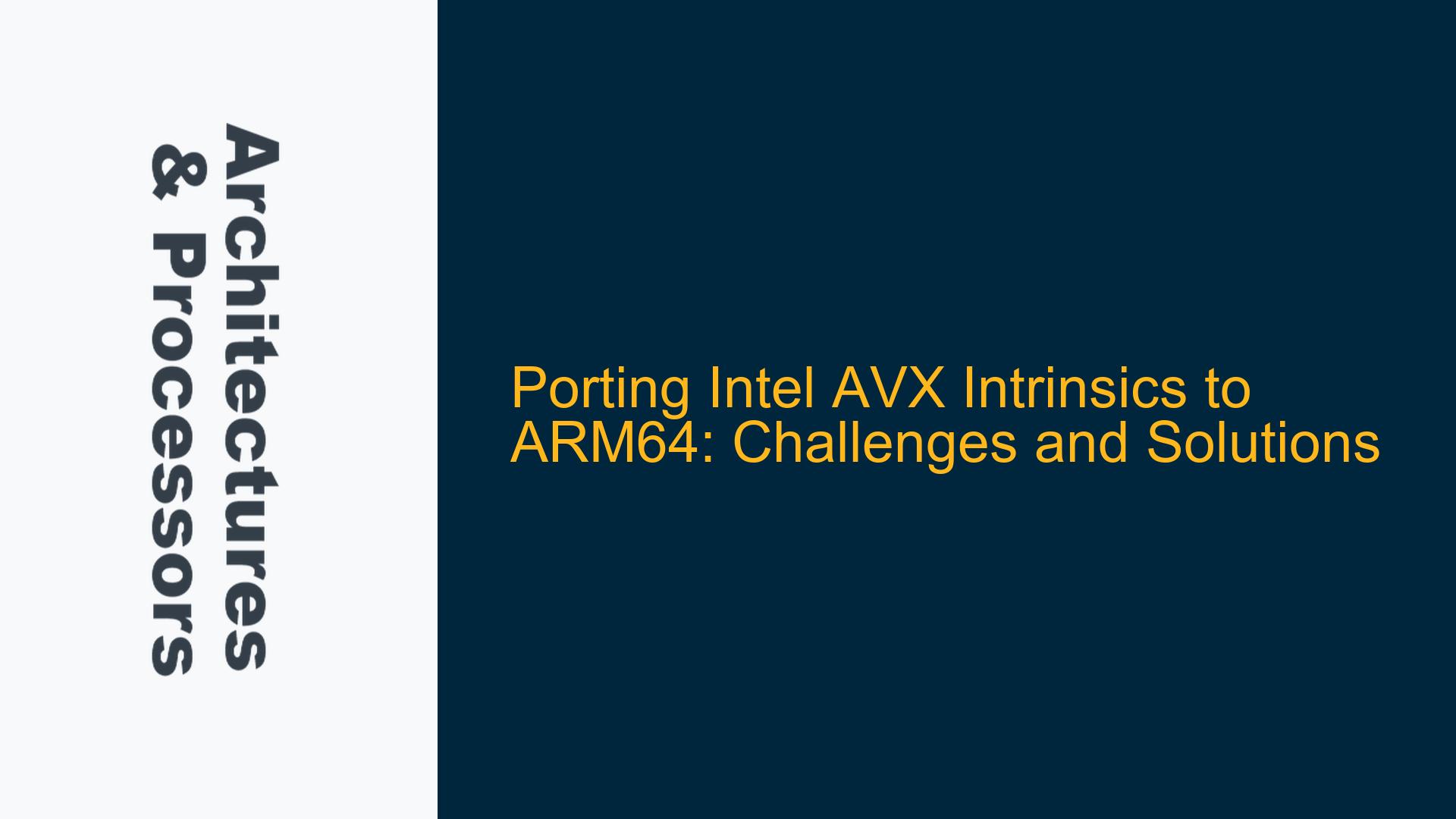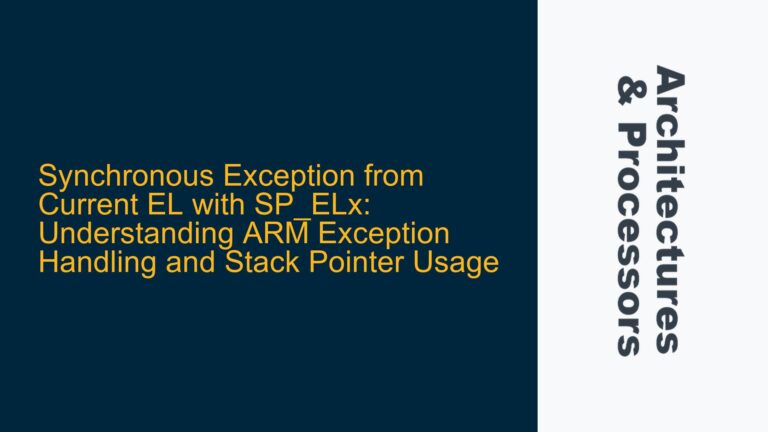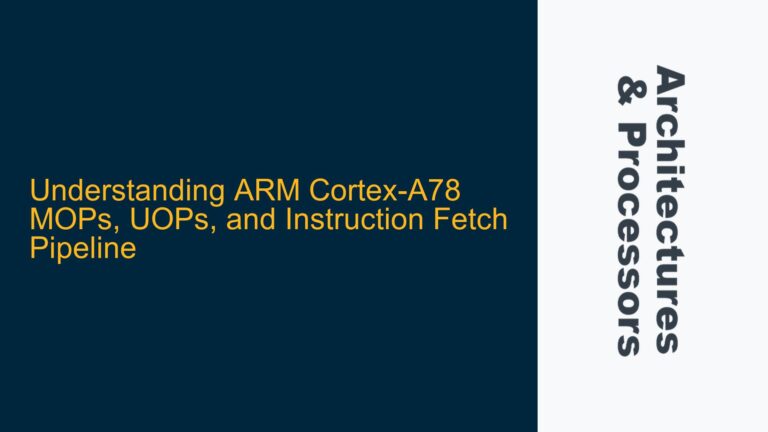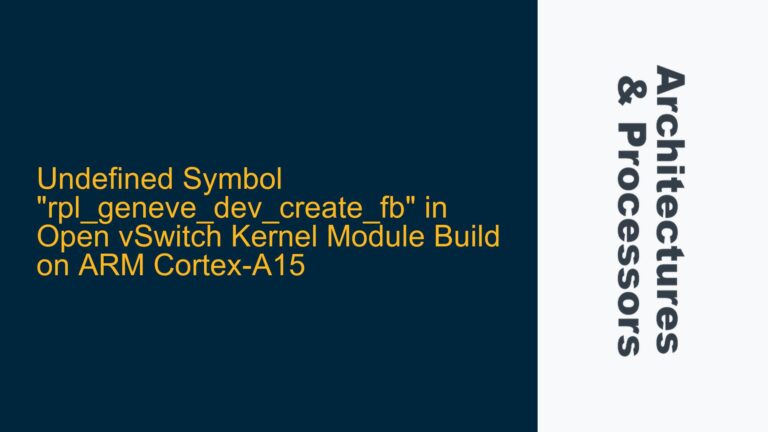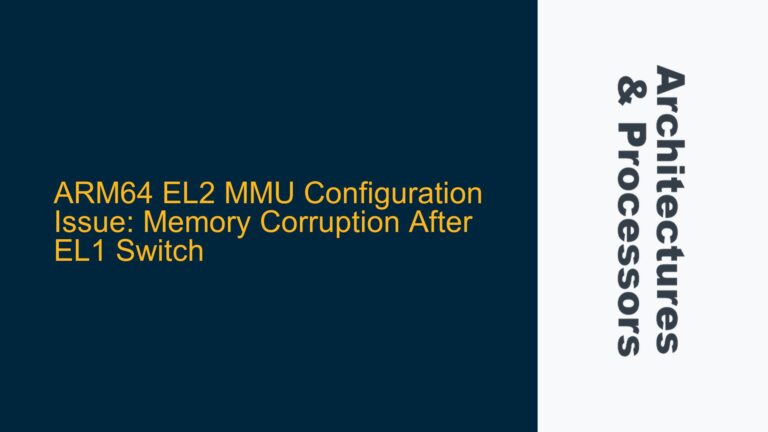ARM64 Intrinsics and Intel AVX Compatibility Issues
When porting code from Intel’s Advanced Vector Extensions (AVX) to ARM64, developers often encounter significant challenges due to the architectural differences between the two platforms. Intel AVX intrinsics, such as _mm256_loadu_pd, _mm256_stream_pd, and the __m256d type, are designed to leverage the SIMD (Single Instruction, Multiple Data) capabilities of Intel processors. These intrinsics are deeply integrated into the x86 architecture, which is fundamentally different from the ARM64 architecture. ARM64, while also supporting SIMD operations through its NEON and SVE (Scalable Vector Extension) technologies, does not have a direct one-to-one mapping for Intel AVX intrinsics. This discrepancy necessitates a thorough understanding of both architectures to effectively port and optimize code.
The primary issue lies in the fact that Intel AVX operates on 256-bit wide vectors, whereas ARM64’s NEON technology typically operates on 128-bit wide vectors. Although ARM’s SVE can handle wider vectors, it is not universally available across all ARM64 processors. This difference in vector width directly impacts how data is loaded, stored, and processed. For instance, the _mm256_loadu_pd intrinsic in Intel AVX loads 256 bits of data from an unaligned memory location into a 256-bit wide register. On ARM64, the equivalent operation would require loading data into multiple 128-bit NEON registers or using SVE registers if available. This not only complicates the porting process but also requires careful consideration of memory alignment and data handling to ensure optimal performance.
Another critical aspect is the streaming store operation represented by _mm256_stream_pd in Intel AVX. This intrinsic is designed to bypass the cache and write directly to memory, which is particularly useful for large data transfers where cache pollution is a concern. ARM64 does not have a direct equivalent for this operation, and developers must resort to alternative strategies such as using non-temporal store instructions or manually managing cache lines to achieve similar behavior. This adds another layer of complexity to the porting process, as the absence of a direct equivalent requires a deep understanding of ARM64’s memory hierarchy and cache management mechanisms.
The __m256d type, which represents a 256-bit wide vector of double-precision floating-point numbers, also poses a challenge. ARM64’s NEON technology supports 128-bit wide vectors of double-precision floating-point numbers, but handling 256-bit wide vectors requires either splitting the data across multiple NEON registers or leveraging SVE if the target processor supports it. This necessitates a rethinking of the data structures and algorithms used in the original Intel AVX code to ensure compatibility and performance on ARM64.
In summary, porting Intel AVX intrinsics to ARM64 is not a straightforward task due to the architectural differences between the two platforms. The primary challenges include the difference in vector widths, the lack of direct equivalents for certain intrinsics, and the need to carefully manage memory and cache behavior. Addressing these challenges requires a deep understanding of both Intel AVX and ARM64 architectures, as well as a methodical approach to code porting and optimization.
Architectural Differences and Intrinsic Mismatch
The core of the issue lies in the architectural differences between Intel’s x86 and ARM64, particularly in how they handle SIMD operations. Intel AVX is designed to work with 256-bit wide vectors, which allows for processing four double-precision floating-point numbers in parallel. ARM64, on the other hand, primarily relies on NEON technology, which operates on 128-bit wide vectors, allowing for two double-precision floating-point numbers to be processed in parallel. While ARM’s SVE can handle wider vectors, it is not as widely adopted as NEON, making it less of a universal solution.
The _mm256_loadu_pd intrinsic in Intel AVX is used to load 256 bits of data from an unaligned memory location into a 256-bit wide register. On ARM64, the equivalent operation would require loading data into multiple 128-bit NEON registers. For example, to load 256 bits of data, you would need to perform two separate 128-bit loads and then combine the results. This not only increases the number of instructions but also requires careful handling of memory alignment to avoid performance penalties.
The _mm256_stream_pd intrinsic in Intel AVX is used to perform a streaming store operation, which bypasses the cache and writes directly to memory. This is particularly useful for large data transfers where cache pollution is a concern. ARM64 does not have a direct equivalent for this operation, and developers must resort to alternative strategies. One approach is to use non-temporal store instructions, which are designed to minimize cache pollution. However, these instructions are not as widely supported on ARM64 as they are on x86, and their behavior can vary across different ARM processors. Another approach is to manually manage cache lines using cache control instructions, but this requires a deep understanding of ARM64’s memory hierarchy and can be error-prone.
The __m256d type in Intel AVX represents a 256-bit wide vector of double-precision floating-point numbers. On ARM64, the equivalent type would be a 128-bit wide NEON vector, which can hold two double-precision floating-point numbers. To handle 256-bit wide vectors, developers must either split the data across multiple NEON registers or leverage SVE if the target processor supports it. This requires a rethinking of the data structures and algorithms used in the original Intel AVX code to ensure compatibility and performance on ARM64.
In addition to these intrinsic mismatches, there are also differences in how the two architectures handle memory alignment and cache behavior. Intel AVX provides intrinsics for handling unaligned memory accesses, but ARM64’s NEON technology is more sensitive to memory alignment, and unaligned accesses can result in performance penalties. This requires careful consideration of memory alignment when porting code from Intel AVX to ARM64.
In summary, the architectural differences between Intel AVX and ARM64 result in a mismatch of intrinsics, particularly in terms of vector width, memory alignment, and cache behavior. Addressing these differences requires a deep understanding of both architectures and a methodical approach to code porting and optimization.
Strategies for Porting and Optimizing AVX Intrinsics on ARM64
Porting Intel AVX intrinsics to ARM64 requires a combination of architectural understanding, careful code analysis, and strategic optimization. The following steps outline a comprehensive approach to addressing the challenges discussed earlier.
Step 1: Analyze and Understand the Original AVX Code
The first step in porting Intel AVX intrinsics to ARM64 is to thoroughly analyze the original code. This involves understanding the purpose of each intrinsic, the data structures used, and the overall algorithm. Pay particular attention to how data is loaded, stored, and processed using AVX intrinsics. Identify any dependencies on specific x86 features, such as 256-bit wide vectors or cache bypassing operations, and consider how these can be translated to ARM64.
Step 2: Map AVX Intrinsics to ARM64 Equivalents
Once the original code has been analyzed, the next step is to map Intel AVX intrinsics to their closest ARM64 equivalents. This involves identifying the appropriate NEON or SVE intrinsics that can achieve similar functionality. For example, the _mm256_loadu_pd intrinsic in Intel AVX can be mapped to a combination of NEON load instructions, such as vld1q_f64, which loads 128 bits of data into a NEON register. To handle 256 bits of data, you would need to perform two separate vld1q_f64 loads and then combine the results.
For the _mm256_stream_pd intrinsic, which performs a streaming store operation, you can use ARM64’s non-temporal store instructions, such as vst1q_f64, which minimizes cache pollution. However, since non-temporal stores are not as widely supported on ARM64 as they are on x86, you may need to manually manage cache lines using cache control instructions, such as DC ZVA (Data Cache Zero by VA), which zeroes a cache line without writing it back to memory.
The __m256d type, which represents a 256-bit wide vector of double-precision floating-point numbers, can be handled by splitting the data across multiple NEON registers or leveraging SVE if the target processor supports it. For example, you can use two float64x2_t NEON registers to hold the 256 bits of data, or use SVE registers if available.
Step 3: Optimize for ARM64’s Memory Hierarchy
ARM64’s memory hierarchy is different from that of x86, and optimizing for it is crucial for achieving good performance. Pay particular attention to memory alignment, as ARM64’s NEON technology is more sensitive to unaligned accesses than Intel AVX. Ensure that data is properly aligned to 128-bit boundaries when using NEON intrinsics, and consider using aligned load and store instructions, such as vld1q_f64 and vst1q_f64, to avoid performance penalties.
In addition to memory alignment, consider the impact of cache behavior on performance. ARM64’s cache hierarchy is different from that of x86, and optimizing for it can result in significant performance improvements. Use cache control instructions, such as DC ZVA, to manage cache lines and minimize cache pollution. Consider using prefetching instructions, such as PRFM (Prefetch Memory), to improve data locality and reduce memory latency.
Step 4: Test and Profile the Ported Code
Once the code has been ported and optimized, the final step is to test and profile it on the target ARM64 platform. Use profiling tools, such as ARM’s Streamline or Linux’s perf, to identify any performance bottlenecks and optimize further. Pay particular attention to the performance of memory operations, as these are often the most critical for SIMD workloads. Compare the performance of the ported code to the original AVX code to ensure that the porting process has not introduced any regressions.
In conclusion, porting Intel AVX intrinsics to ARM64 is a complex task that requires a deep understanding of both architectures. By carefully analyzing the original code, mapping AVX intrinsics to ARM64 equivalents, optimizing for ARM64’s memory hierarchy, and thoroughly testing the ported code, developers can achieve a successful port that maintains performance and functionality.
